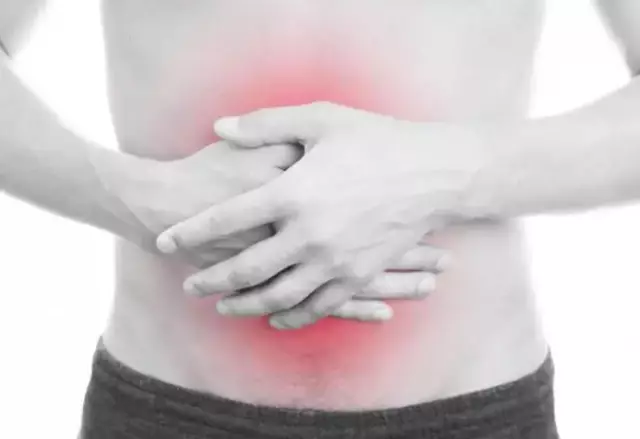- Author Rachel Wainwright [email protected].
- Public 2023-12-15 07:39.
- Last modified 2025-11-02 20:14.
Mastitis

The inflammatory process that is localized in the mammary gland is called mastitis. The disease most often occurs in women aged 15-45 years. At a young age, mastitis is caused by increased blood and lymph circulation, while in the premenopausal period, hormonal disorders.
Inflammation is common in nursing mothers, especially in the first three months after giving birth. In this case, they speak of lactational mastitis. The disease is not the prerogative of only women of childbearing age, the inflammatory process can develop in both men and newborns. In this case, fibrocystic mastitis is meant.
Causes of mastitis
As with any inflammation, the cause of mastitis is the penetration of pathogens into the breast. This can happen both from the outside, for example, with damage to the skin in the breast area, and from the inside, when there are foci of chronic infection in the body, such as tonsillitis, carious cavities, and diseases of the genital area. In lactating women, most often, the inflammatory process develops in response to milk stagnation, blockage of the ducts or the presence of cracks in the nipples. The reason for the development of mastitis in newborns is the residual effect of maternal sex hormones.
Symptoms of mastitis
By the nature of the inflammatory process, several stages of mastitis are distinguished:
- serous.
- infiltrative.
- purulent.
- abscessing.
- phlegmonous.
- gangrenous.

The first three stages are interconnected, it is in this sequence that a purulent focus is formed. Further, the development of mastitis in three directions is possible: either an abscess is formed, in which the purulent focus is limited, or phlegmon, when inflammation captures the entire mammary gland, or necrosis (death) of tissues occurs.
The symptoms of mastitis depend on what stage the disease is in. At the very beginning, patients have a sharp rise in temperature, chills and weakness appear, and sweat begins to flow profusely. The mammary gland increases in volume, becomes dense, a sharp pain of a bursting character appears, above the site of inflammation, the surface of the skin acquires a reddish tint. With lactational mastitis, signs of inflammation occur against the background of a decrease in the amount of milk produced. In lactating women, in most cases, cracks in the nipples are observed, it is through them that the infection penetrates into the breast.
In the absence of treatment for mastitis or its improper conduct, the patient's condition deteriorates sharply. Against the background of a high temperature, the redness of the skin over the focus of inflammation increases; when probing, the lesion site is clearly defined. With the transition to the phlegmonous stage, the mammary gland increases sharply in volume, the skin acquires a bluish tint. The inflammatory process captures the lymph nodes located near the diseased breast. In the gangrenous stage of mastitis, the symptoms mentioned above are accompanied by blisters with bloody contents and areas where tissues are necrotic (die off). Edema, in addition to the mammary gland, spreads to nearby tissues.
Mastitis can be complicated by the development of sepsis, when pathogens enter the bloodstream. It is also possible that the inflammatory process spreads to the lymph nodes, in this case they speak of lymphadenitis, and lymphatic vessels, lymphangitis develops. With a spontaneous opening of the abscess, a long-term non-healing fistula forms in this place.
Mastitis treatment
Given the severity of the disease and the potential for adverse outcomes, treatment for mastitis should be taken seriously. To avoid complications with mastitis, it is strictly forbidden to self-medicate. In most cases, the means used do not eliminate the cause of mastitis, and this leads to the fact that the inflammatory process develops further, threatening more serious consequences.

Typically, treatment for mastitis consists of antibiotics, infusion medications, and immunoglobulins. Such therapy can reduce the phenomena of intoxication and increase the overall resistance of the body. With lactational mastitis, lactation suppressants are used to reduce the amount of milk produced.
Purulent forms of mastitis are a direct indication for surgical intervention.
Folk remedies for the treatment of mastitis
In alternative medicine, there are many recipes, the purpose of which is to eliminate foci of inflammation in the mammary gland. But folk remedies for mastitis should be used only in combination with the therapy prescribed by a doctor. In the initial stages, cabbage leaves, mother-and-stepmothers, burdock, scalded with boiling water, can be applied to the lesion site. Flour and honey cakes have a good effect. Tea made from medicinal sage or an infusion of a mixture of hop inflorescences, walnut and sage leaves will help reduce lactation.
Prevention of mastitis
For nursing mothers, the main measures for the prevention of mastitis are hygienic care of the mammary glands and the organization of the correct feeding regimen. It is necessary to ensure that the mammary gland is completely emptied. To prevent the appearance of cracks in mastitis, the child must be taught from the very first feeding to the correct capture of the nipple.
Preventive measures for mastitis also include the timely recovery of chronic foci of infection, maintaining a healthy lifestyle, organizing proper nutrition, maintaining immunity at the proper level, protecting the mammary glands from injury and hygienic procedures.
YouTube video related to the article:
The information is generalized and provided for informational purposes only. At the first sign of illness, see your doctor. Self-medication is hazardous to health!






